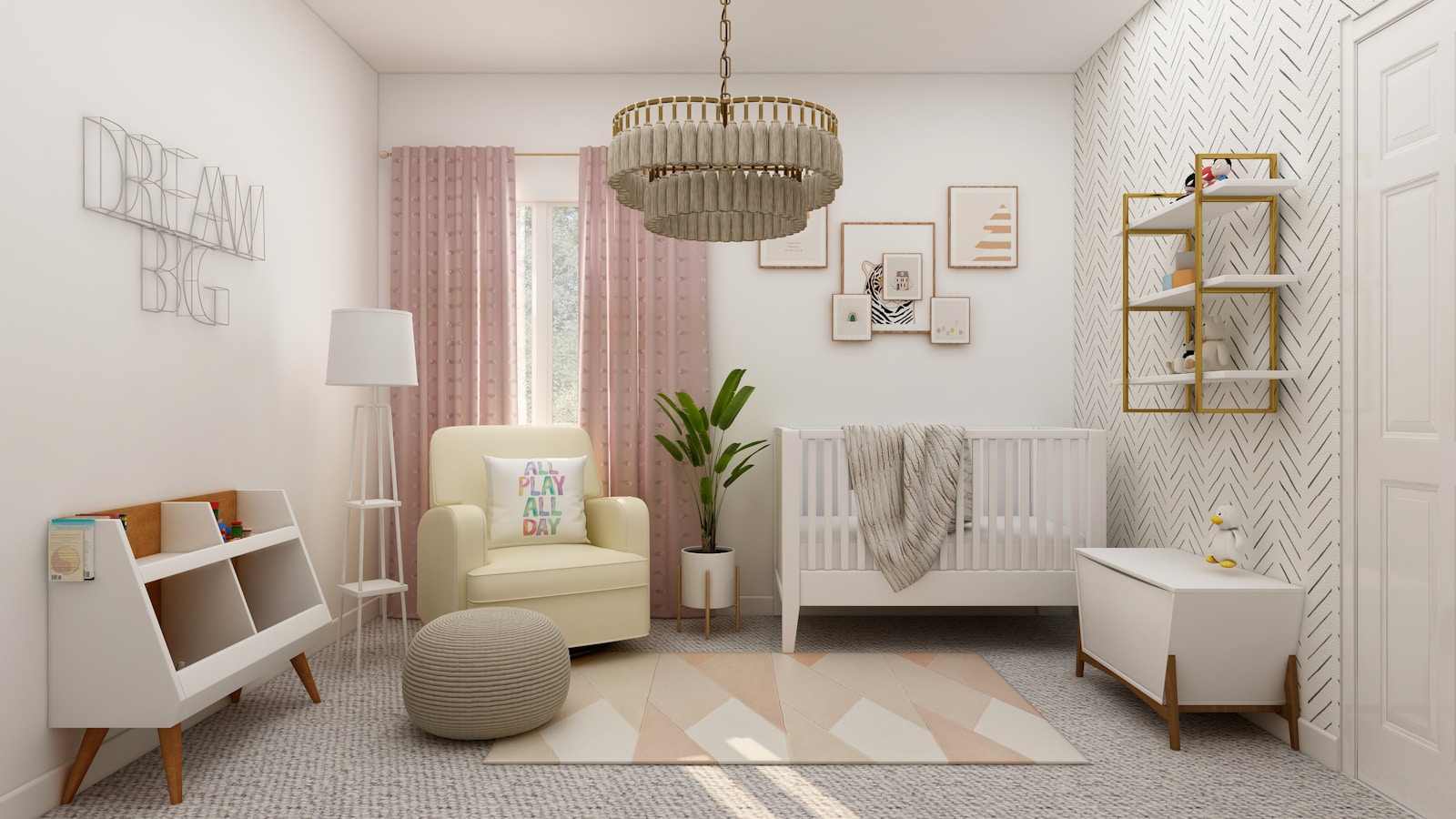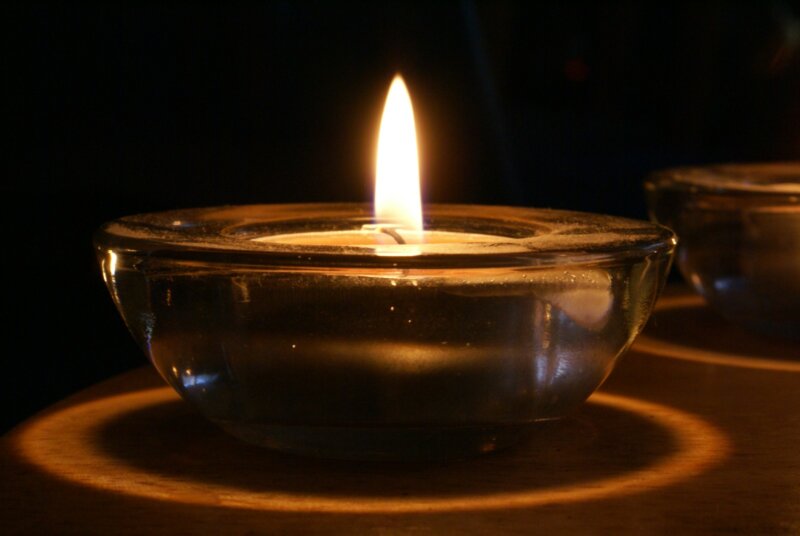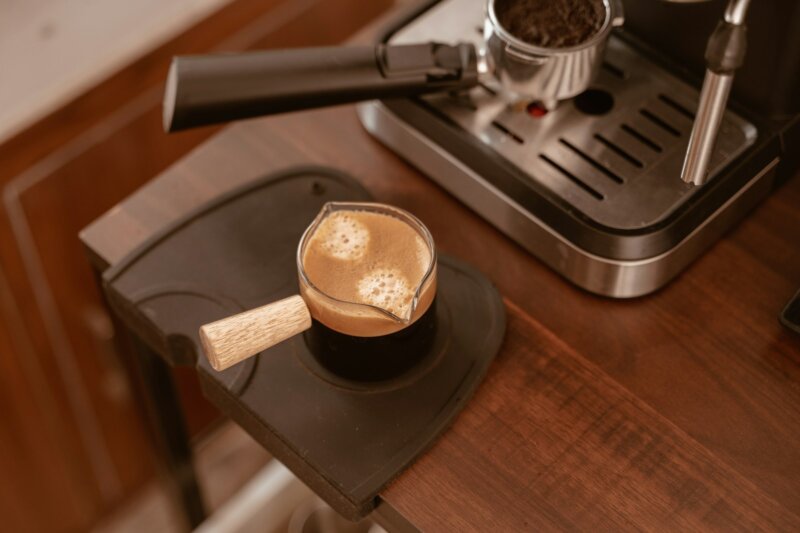Setting up a baby’s nursery can feel like a lot. There are many choices, and safety matters. The best time is late in the second trimester or early in the third. This Nursery Setup Checklist: Safe, Practical, and Soothing turns big tasks into clear steps. You will see parent tips on crib selection, babyproofing, organization, comfort, and more. Ready to build a calm, practical space? Keep reading.
Choosing the Right Space for Your Nursery
Pick a quiet spot close to your bedroom. Short walks at night make care easier. Choose a room with natural light and fresh air for comfort.
Strong sun can wake a light sleeper. Blackout curtains help keep naps steady. If the room feels drafty, add insulation or seal leaks.
No spare room available? A nursery nook in your bedroom works well. Use vertical shelves, a slim dresser, or bins under the crib to save space. Create small zones for sleeping, changing, and play to keep movement safe and simple.
- Keep pathways clear for night feeds and diaper changes.
- Place the crib away from windows, cords, and hanging decor.
- Use a soft rug for floor time, then secure the edges.
Essential Sleeping Setup
A safe sleep environment helps your baby rest. Comfort helps you rest too. Small choices here can improve every night and nap.
Crib or bassinet with a firm mattress
Choose a crib or bassinet that meets current safety standards. Slats should be no more than 2 and 3/8 inches apart. Top rails need to be at least 26 inches above the mattress. Corner posts should stick up less than one-sixteenth of an inch. The product label should state it is safe for infant sleep.
A firm mattress lowers the risk of suffocation. It must lay flat and fit snugly, with no gap larger than two fingers between the mattress and sides. Newton Baby mattress is breathable and washable, so cleanup is faster.
- Use 1 to 3 washable mattress pads to protect from leaks.
- Keep 2 to 4 fitted sheets ready for quick changes.
- Place the crib away from windows, curtains, blinds, and cords.
Safe bedding and swaddles
Use only a fitted sheet in the crib or bassinet. Choose breathable fabrics for better temperature control. Keep the sleep space clear of pillows, bumper pads, stuffed animals, and loose blankets.
Swaddling can calm many newborns. Choose swaddles with secure closures, like Velcro, for safe wrapping. Always place your baby on the back for every sleep as the American Academy of Pediatrics advises.
- Plan for 1 to 3 mattress pads and 2 to 4 fitted sheets.
- Remove mobiles or hanging toys once your baby can get on hands and knees.
- Stop swaddling when your baby shows signs of rolling.
Diapering Station Essentials
A smart diapering setup saves time, especially at 3 a.m. Good organization keeps baby essentials close and the space clean.
Changing table or dresser with changing pad
A sturdy dresser with a secured changing pad does double duty. It stores diapers, wipes, creams, and backup outfits. Use a safety strap or topper so the pad does not slip.
Place the station near the crib for quick changes. A dresser outlasts a dedicated changing table, so it is a practical long-term choice. Keep a portable mat in a drawer for travel or quick floor changes.
Diaper storage and disposal system
Use a diaper pail with an odor-blocking lid for waste. Keep essentials within reach, but out of a baby’s grab zone. Clear bins and labels speed up refills and help other caregivers.
- Stock diapers, wipes, diaper cream, and hypoallergenic lotion.
- Fill a diaper caddy for moveable changes around the home.
- Set a mini station in a high-use room, like the living room.
- Keep a go-bag with diapers and wipes near the door for outings.
Feeding Area Setup
A cozy feeding area makes long nights easier. Set it up for comfort and quick access to care items.
Comfortable chair or glider
Pick a chair or glider with smooth movement and firm support. Test the seat height and armrests to protect your back and shoulders. Easy-to-clean fabric is helpful with spit-up and spills.
Place the chair near storage so you can reach supplies without standing. A compact glider works well in tight spaces. Many parents say a good chair eases bedtime and nap routines.
Nursing pillow and side table
Nursing pillows support your baby and improve your posture. Less strain often means longer, more comfortable feeds. Keep extra nursing pads nearby in case of leaks.
Place a small side table next to the chair. Stock burp cloths, water, snacks, and a phone charger. If pumping, keep a breast pump, storage bags or bottles, and a clean parts bin close by. Many hospitals send families home with tips to use pillows for early support.
Storage and Organization Tips
Good organization reduces stress and saves time. Set up simple systems so anyone can help with care items.
Closet organizers and labeled bins
Use baby hangers, extra closet rods, and drawer dividers for tiny clothes. Shelf risers and divider hangers help separate sizes. Removing a closet door can improve access in a small room.
Store small items in clear bins, like socks, hats, and pacifiers. Add easy-to-read labels to speed up changes and laundry. Color-coded labels are fast to scan and look tidy.
Rotating seasonal baby clothes
Store off-season clothes in labeled bins on high shelves. Keep current sizes in drawers or on low shelves for quick grabs. Hanging organizers can hold swaddles, burp cloths, or sleep sacks.
Move outgrown items into a donation or keepsake bin right away. Vertical setups make small closets work harder. This keeps your nursery organized through fast growth spurts.
Comfort and Safety Features
Comfort supports better sleep. Safety measures help you relax. Put both in place from day one.
Baby-proofing furniture and outlets
Anchor heavy furniture to the wall with safety straps or brackets. This reduces tip-over risk once babies start moving, often around 4 to 6 months. Add corner guards to tables and dressers, but skip the crib.
Cover all electrical outlets. Unplug appliances when not in use. Keep cords secured and out of reach.
Lock up cleaners and medicines in latched cabinets. Check often for new hazards as your child grows. Secure loose rugs and keep small items off high edges.
Soft lighting and noise machines
Use dimmable lights for night feeds and diaper changes. A soft nightlight lets you see without fully waking your baby. Gentle lighting helps maintain a calm sleep environment.
White noise can soothe babies and support routines. The American Academy of Pediatrics suggests keeping volume at or below 50 dB SPL A. Place any sound machine at least 7 feet from the crib. Timers help limit exposure and protect hearing.
You can use a Bluetooth speaker for lullabies at low volume. To check levels, the NIOSH Sound Level Meter App can help measure sound in the room.
Creating a Soothing Atmosphere
Small decor choices shape mood and sleep quality. Keep it simple and safe. That blend tends to work best for families.
Neutral colors and calming decor
Soft pastels like blue, pink, or lavender can calm the room. Neutral shades such as beige, gray, and white create a peaceful base. Avoid busy patterns that stimulate the eyes.
Choose multi-function furniture in neutral colors for a unified look. Use low-VOC paint to reduce fumes. VOCs are chemicals that can affect air quality; low-VOC options are safer for babies.
Functional decor items for added comfort
Dimmable lamps and nightlights support late-night tasks. Wall-mounted shelves save floor space and keep books and toys handy. Baskets and bins store blankets, stuffed animals, and extra diapers without clutter.
Use vertical storage and clear labels for fast access. Pick rugs made from organic cotton or wool for floor play. A sturdy dresser handles clothes and offers a useful surface. Aim for beauty that works hard every day.
Bottom Line
A smart nursery setup can steady each day and night. Safety, comfort, and organization work together. Keep baby essentials within reach to make tired moments easier. Use safe sleep practices, tidy systems, soft lighting, and calming decor. Add babyproofing as needed and anchor furniture for stability. For health or sleep concerns, follow your pediatrician’s guidance and AAP safe sleep rules. With this Nursery Setup Checklist: Safe, Practical, and Soothing, your space can be ready from the start.







